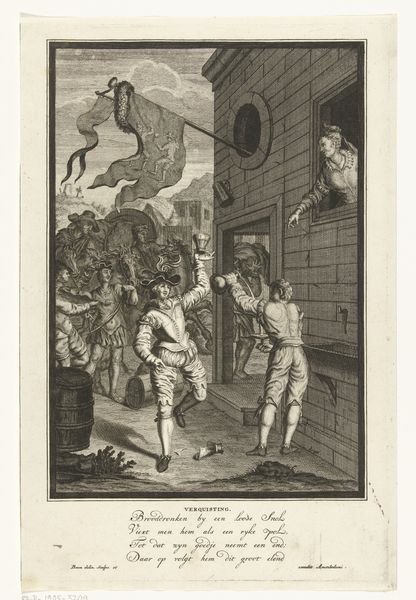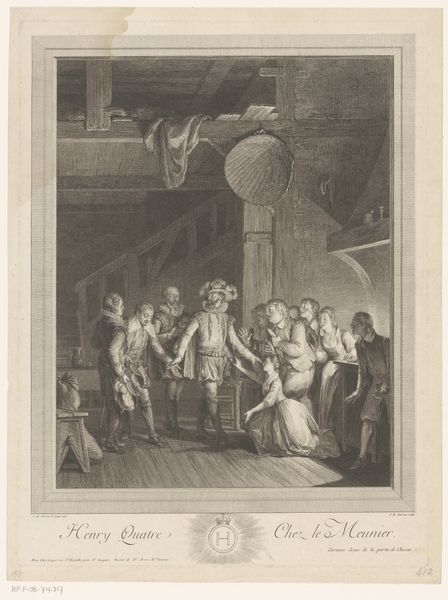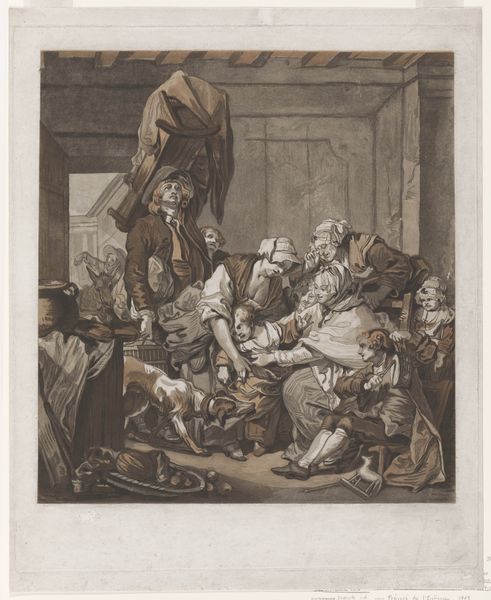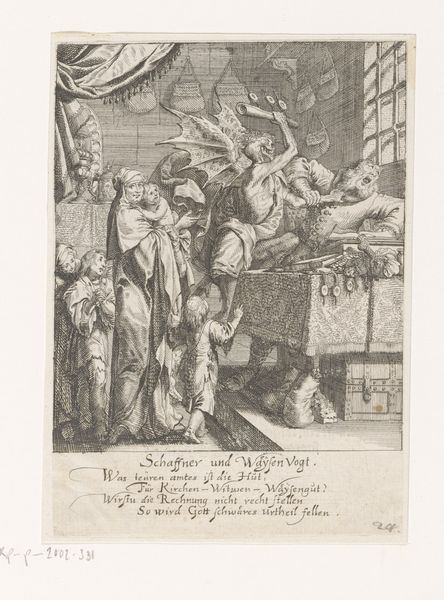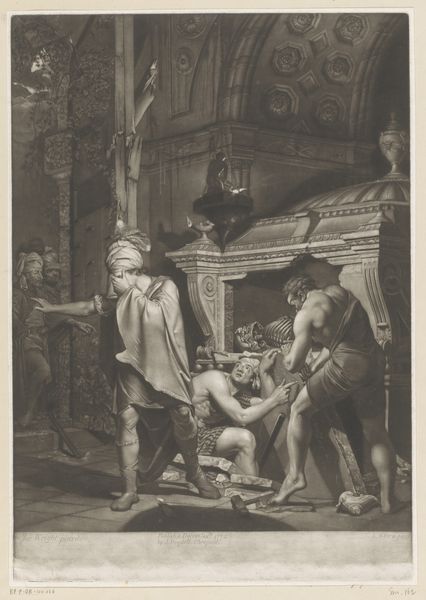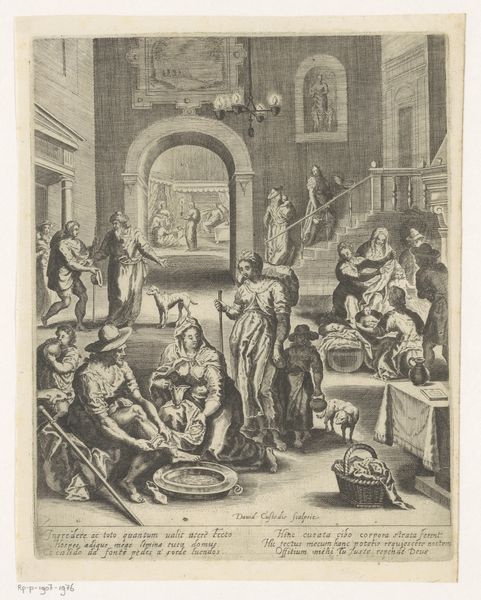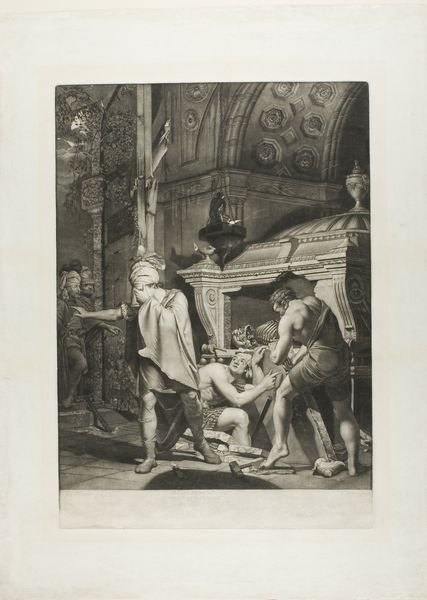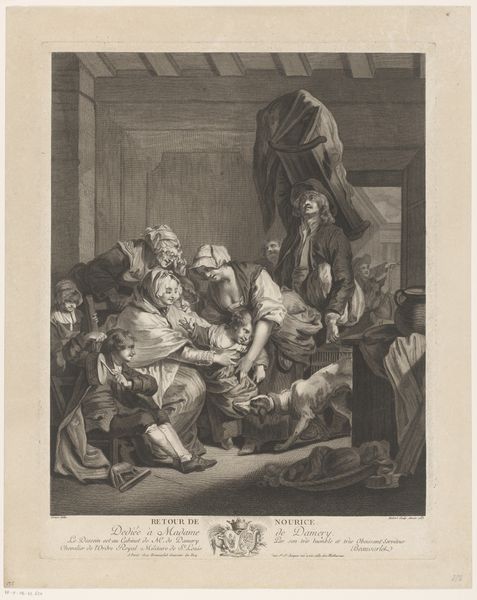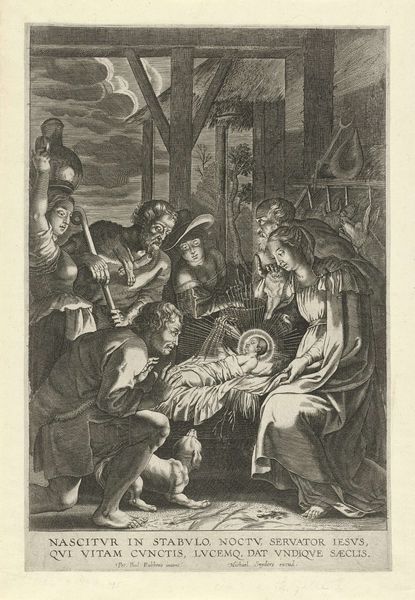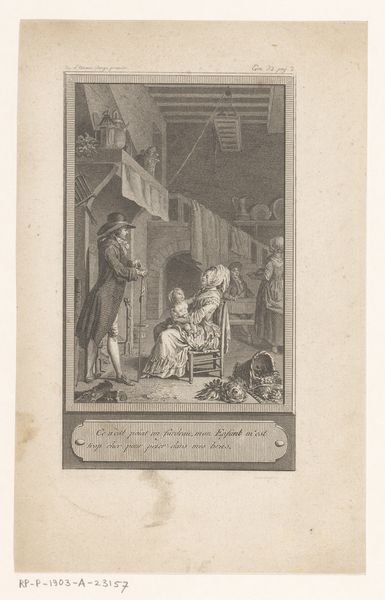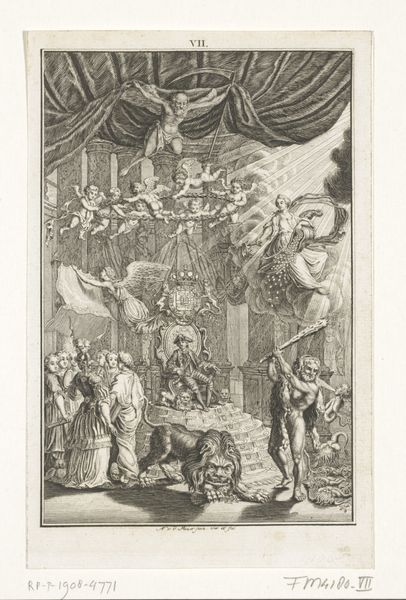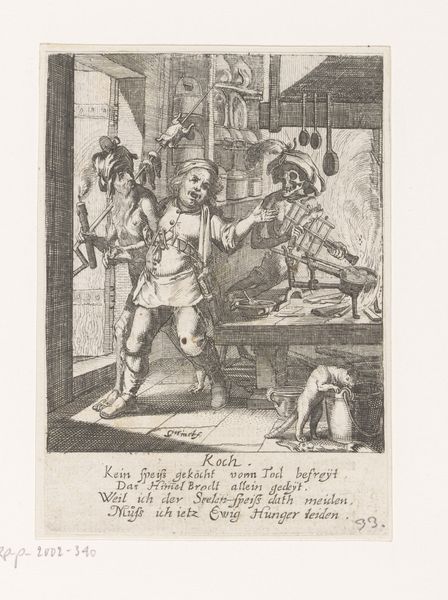
graphic-art, etching, engraving
#
graphic-art
#
baroque
#
etching
#
caricature
#
caricature
#
genre-painting
#
history-painting
#
engraving
Dimensions: height 358 mm, width 297 mm
Copyright: Rijks Museum: Open Domain
Curator: Let’s have a look at this etching from around 1730-1735, called *Satire op de kunstveiling*. The artist is William Henry Toms. It's held here at the Rijksmuseum. My immediate reaction? This is a bizarre and biting little world, teeming with grotesqueries. It's so busy, so exaggerated! It makes me think of a Boschian nightmare staged in a fashionable drawing room. What do you make of it? Editor: What jumps out at me are the layers of commentary embedded in the piece, specifically regarding materials, not only artistic, but commodities. It seems to depict a specific cultural moment, doesn't it? It’s crammed with clues about early capitalism and the obsession with luxury goods. This isn’t just art criticism, but economic commentary in ink. Curator: Absolutely. See the devilish figures surrounding the auctioneer? Toms isn't just making a statement about taste, he’s indicting the whole system that inflates value. It’s quite cynical and rather theatrical, with everyone in character. It seems he thought the whole auction setting was nothing more than an organized spectacle of greed, fueled by hype and empty promises, quite like the economic bubbles that rose during the era. I wonder how conscious viewers then would've been of this analogy? Editor: Consider also how the medium itself—etching and engraving—connects to the themes. The labor-intensive, meticulous process mirrors the creation of value from material, the crafting of desirable objects and stories, which also gives it an incredible accessibility. Graphic arts were always meant for wider circulation, an early form of mass media. Curator: Good point, a democratization of criticism! I love how layered it is. Even the costumes and poses are designed to mock pretension. To think someone dedicated so much craft to critiquing a very real system based around the act of crafting objects for pleasure. There’s real drama, real venom, behind this picture. Editor: Indeed, seeing how commodities have affected public mood is one thing; being able to afford the materials, acquire the skills, and find the time to represent it, is quite another. I walk away from this thinking less about individual genius and more about shared critique and accessibility through artistic materiality. Curator: I feel I see the absurdity of it all in such detail, and question how much has truly changed.
Comments
No comments
Be the first to comment and join the conversation on the ultimate creative platform.
